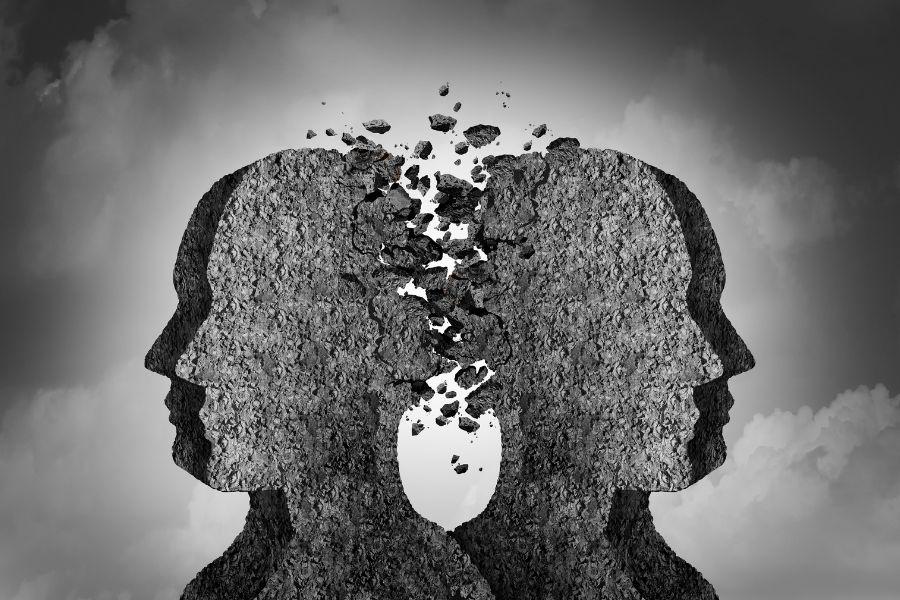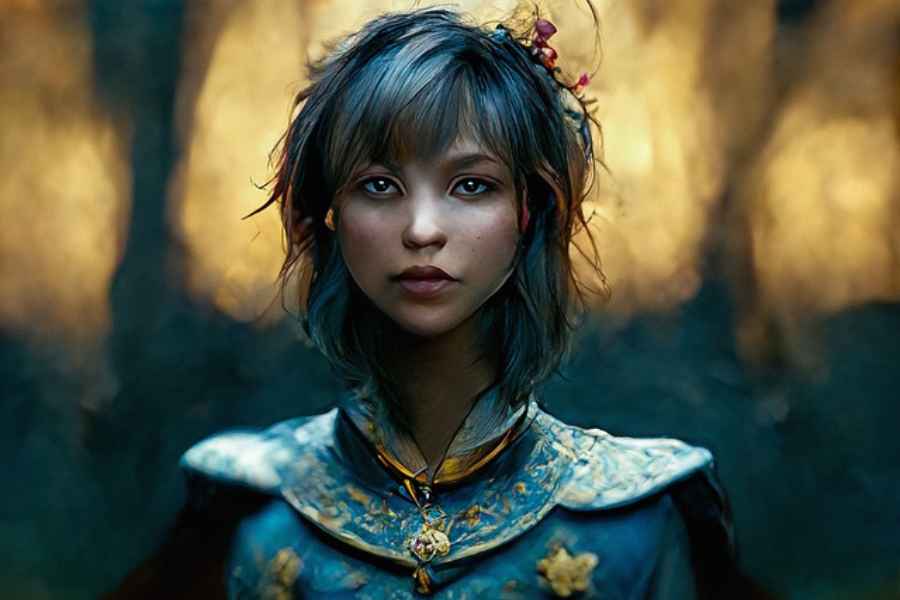The dance of “protagonist vs antagonist” isn’t just about good versus evil — it’s what keeps us riveted, page after page, scene after scene.
Think about Harry Potter’s determination against Voldemort’s malevolence or Achilles’ wrath pitted against Hector’s valor. It’s this dynamic tug-of-war that makes stories unforgettable.
Intrigued?
Let’s unravel the magic behind these narrative powerhouses and find out why they’re so darn captivating.

Protagonist vs Antagonist: The Core of Storytelling
The essence of captivating storytelling hinges on the dynamic between the protagonist and the antagonist.
This duo has anchored tales from ancient mythologies to modern cinematic blockbusters. But why are they so fundamental?
At a basic level, stories thrive on conflict.
It’s the clash of wills, the contest of desires, and the friction of differing motivations. The protagonist and antagonist are the embodiment of this conflict. Each character provides a counterpoint to the other, driving the narrative forward, keeping readers and viewers engaged.
However, not all stories rely on a clear-cut protagonist-antagonist dynamic.
Some narratives delve into internal conflicts, where the main character grapples with their inner demons.
Yet, even in these tales, the core principle remains.
There’s a driving force (protagonist) navigating through or against an opposing force (antagonist). This tension, whether stemming from clashing characters or internal struggles, keeps the narrative wheel turning.
In essence, the interplay between the two reflects the complexities of human nature and relationships. Through their interactions, we gain a deeper understanding of desires, dilemmas, and the human condition.
Understanding the Protagonist: Not Just the “Good Guy”

When someone says “protagonist,” what pops into your mind? Superman? Sherlock Holmes?
Yes, they are protagonists in their stories, but let’s get one thing straight: a protagonist isn’t always the knight in shining armor. Shocked? Let’s dissect this a bit more.
The protagonist is essentially the main character, the one around whom the story revolves.
However, donning the cape doesn’t automatically make one the “hero.” There’s so much more beneath the surface.
Ever heard of Walter White from Breaking Bad? He’s no hero, but he sure is compelling. That’s where we meet our first variant, the Antihero. Flawed, imperfect, but oh-so-relatable.
Then there’s the False Protagonist, like Marion Crane in Alfred Hithcock’s Psycho. Just when you think you’ve got the story figured out, bam! They’re out, and someone else takes center stage.
And then there are Group Heroes — like the kids from Stranger Things. Group heroes are just what they sound like: multiple protagonists who carry the story on their collective shoulders.
In essence, a protagonist is a nuanced blend of traits, ambitions, and flaws. With each layer we peel back, we’re invited deeper into the heart of their journey.
Now, let’s pivot and delve into the enigmatic world of antagonists, and uncover their equally intricate layers…
Unveiling the Antagonist: Beyond Just “The Bad Guy”

When people hear the word “antagonist,” a slew of villainous images might flood in: think Darth Vader’s heavy breathing or the cruel sneer of the Wicked Witch of the West.
However, painting the antagonist with such a narrow brush misses out on the vast canvas of storytelling opportunities.
At their core, antagonists are not merely barriers to the protagonist’s goals; they are reflections of deeper conflicts within the narrative. Often, they embody the very challenges or fears the protagonist must confront to grow.
And antagonists aren’t necessarily villains, but individuals with contrasting beliefs or values.
Consider Erik Killmonger from Black Panther. While he opposes T’Challa, he isn’t purely malevolent. He’s driven by a genuine pain and a vision of justice formed from his experiences.
These gray areas make for a more thought-provoking and relatable antagonist, pulling readers into the heart of moral debates.
Furthermore, just as our protagonist doesn’t always wear the hero’s cap, the antagonist isn’t restricted to a dark cloak of villainy.
Nature, society, or even time can play the role. In The Old Man and the Sea, the relentless sea and the marlin challenge Santiago, reflecting themes of perseverance, aging, and man’s relationship with nature.
Lastly, remember the shades between black and white.
The antagonists that linger in our memories are those painted in myriad hues. Their motivations, like our own, stem from a cocktail of past experiences, desires, and even wounds.
It’s these shades of gray, these dappled lights and darks, that add depth, turning them from mere obstacles into integral parts of the narrative tapestry.
Pitting Protagonist Against Antagonist: The Heart of Conflict

The dynamic between the protagonist and antagonist is the lifeblood of a story, a pulse that keeps the narrative beating with tension, surprise, and anticipation.
The heart of every gripping tale lies in the dance of these two characters. But it’s not just a superficial skirmish. It’s a battle of values, goals, and motivations.
Take, for instance, the iconic battles between Batman and the Joker in the world of comics.
This isn’t just a straightforward hero vs. villain clash. It’s a deep dive into the psychology of order versus chaos.
Batman, with his unwavering sense of justice, stands as a beacon of hope in the bleak Gotham City, while the Joker thrives on unpredictability and mayhem.
Their encounters are more than just physical brawls; they’re cerebral games that challenge the very definitions of morality and sanity.
However, the relationship between a protagonist and an antagonist isn’t always so clear-cut. Sometimes this conflicting duo shares a bond, a mutual history that blurs the lines between friend and foe.
Think of Professor X and Magneto from the X-Men series. Their shared vision for mutant-kind, yet divergent methods, make their confrontations layered and poignant.
Furthermore, the conflict doesn’t always play out on grand stages with epic battles. in Pride and Prejudice, Elizabeth Bennet and Mr. Darcy’s initial antagonistic relationship isn’t built on malice but on misunderstandings and societal norms.
Their verbal sparring and mutual prejudices aren’t just about personal differences; they highlight the class distinctions and societal expectations of their era.
And, in some narratives, the antagonist might not even be an individual character.
The hero might be struggling against a system or societal expectations, trying to carve a niche or change the status quo, and making the struggle cerebral and deeply personal.
Ultimately, the heart of any story is this conflict, whether it’s a grand superhero showdown or a nuanced societal critique. The interplay between the protagonist and antagonist, whether through fists or words, lays bare human motivations, desires, and flaws.
8 Tips (& Tricks) to Weave A Compelling Protagonist and Antagonist into Your Writing

Crafting a fulfilling dynamic between a protagonist and antagonist is much like crafting a recipe. Both require the right ingredients in the right proportion, all blended seamlessly together.
Here are some indispensable tips for cooking up a truly unforgettable character dynamic:
1. Understand Their Motivations
Both your protagonist and antagonist should have clear, compelling motivations. Remember, while Batman fights for justice and order, his arch-nemesis, the Joker, thrives in chaos for its own sake. Their contrasting motivations fuel their enduring clash.
2. Create Depth with Backstories
A rich backstory adds layers to your characters. Think of Magneto and Professor X from the X-Men series. Both have shared histories and traumas, making their ideological battles much more poignant.
3. Mirror and Contrast
Often, it’s the similarities between the protagonist and antagonist that make their differences stand out. In “The Dark Knight”, both Batman and the Joker are shaped by trauma, but they choose diametrically opposite paths, making their face-offs charged with tension.
4. Evolution is Key
Just as real people evolve over time, so should your characters. The dynamics between the protagonist and antagonist should shift, grow, and transform as the story progresses.
Consider how the relationship between Thor and his brother Loki evolves across the Marvel films, oscillating between enmity and reluctant camaraderie.
5. Make the Conflict Personal
The battle between hero and villain becomes infinitely more gripping when it’s personal. When Simba faces Scar in “The Lion King”, it’s not just about reclaiming Pride Rock, but also about avenging his father and confronting his past.
6. Balance Power Dynamics
Ensure neither character completely overshadows the other in terms of power or intelligence. Think Sherlock Holmes and Moriarty — their intense rivalry is grounded in mutual respect and recognition of each other’s prowess.
7. Utilize External Conflicts
These can be physical confrontations, intellectual debates, or emotional showdowns. For instance, in The Matrix, Neo’s confrontations with Agent Smith range from hand-to-hand combat to deeper philosophical disagreements about humanity.
8. Harness Internal Struggles
Sometimes, the most riveting battles are internal. Luke Skywalker’s struggle in “Star Wars” isn’t just against Darth Vader but also with his own identity and destiny.
The Essence of Protagonist vs Antagonist Dynamics

The mesmerizing interplay between protagonist vs antagonist is the heartbeat of any memorable narrative.
It’s not a mere contest of good against evil but a profound exploration of desires, ideologies, and humanity’s innate complexities.
As you write your stories, remember the importance of this relationship. It’s the driving force that keeps readers entrenched, urging them to turn one page after another.
Embrace the dance of conflict, nurture it, and let your characters lead the way.
In the dance between protagonist and antagonist, you’ll find the soul of your story, waiting to be shared with the world.



